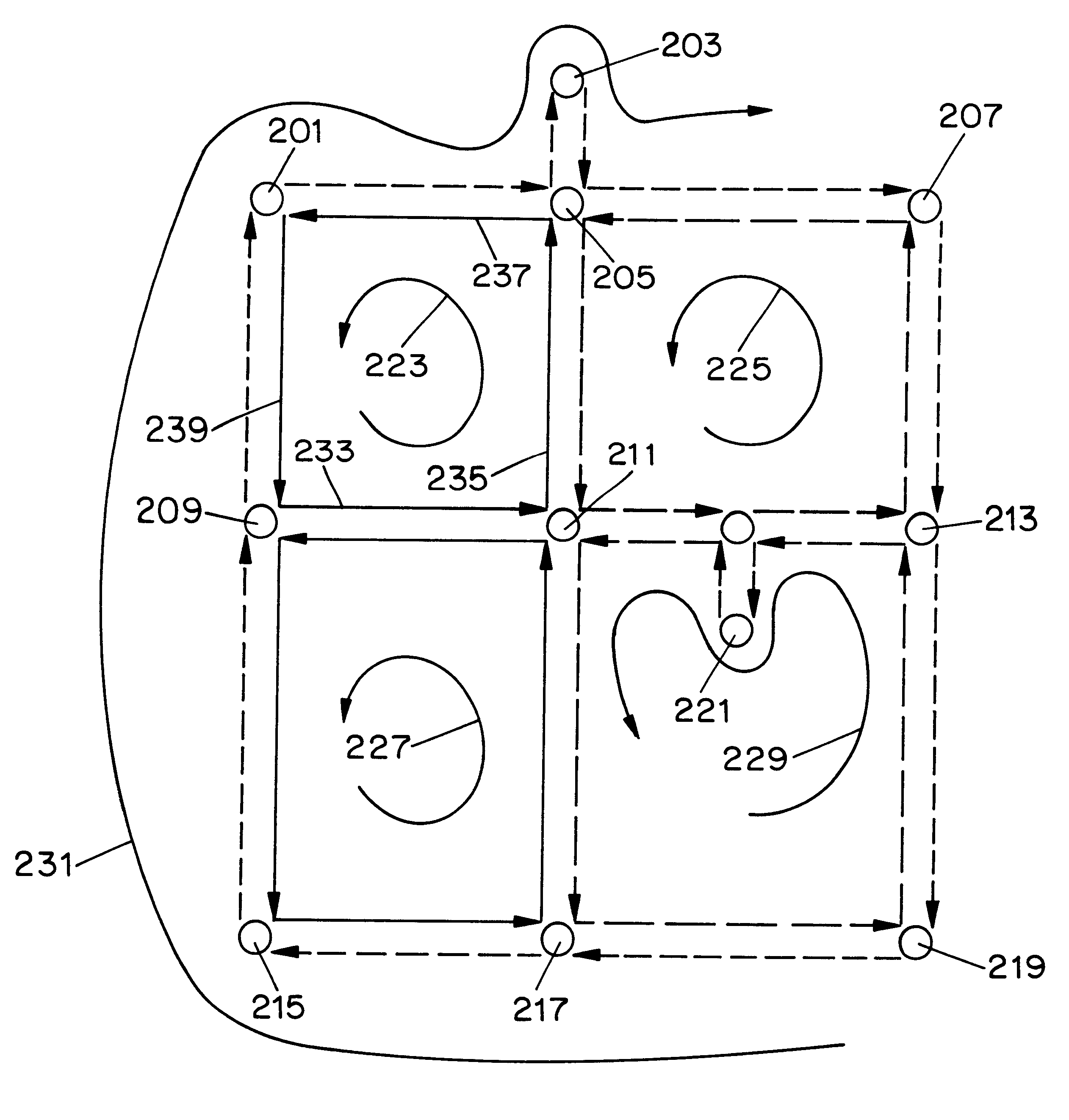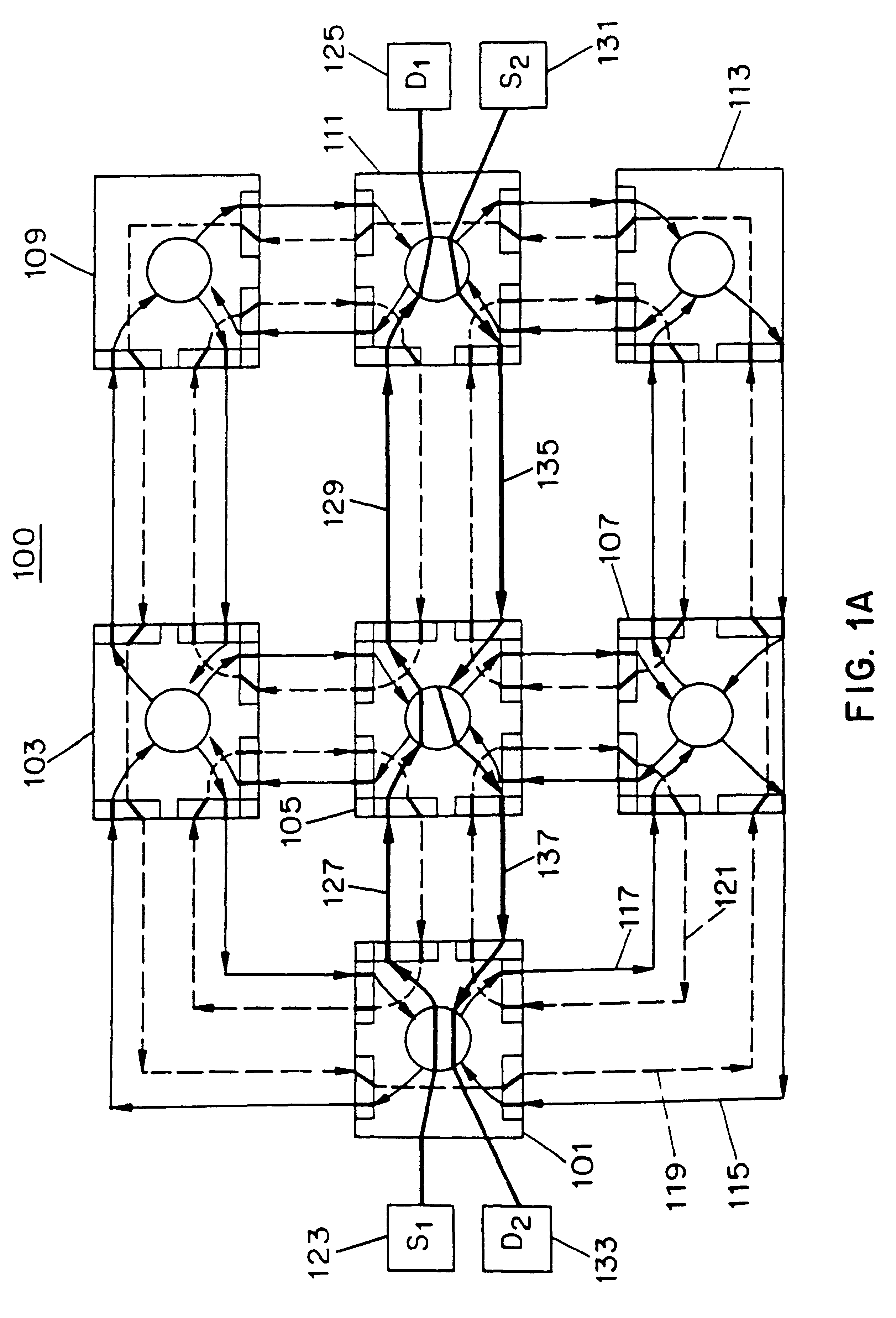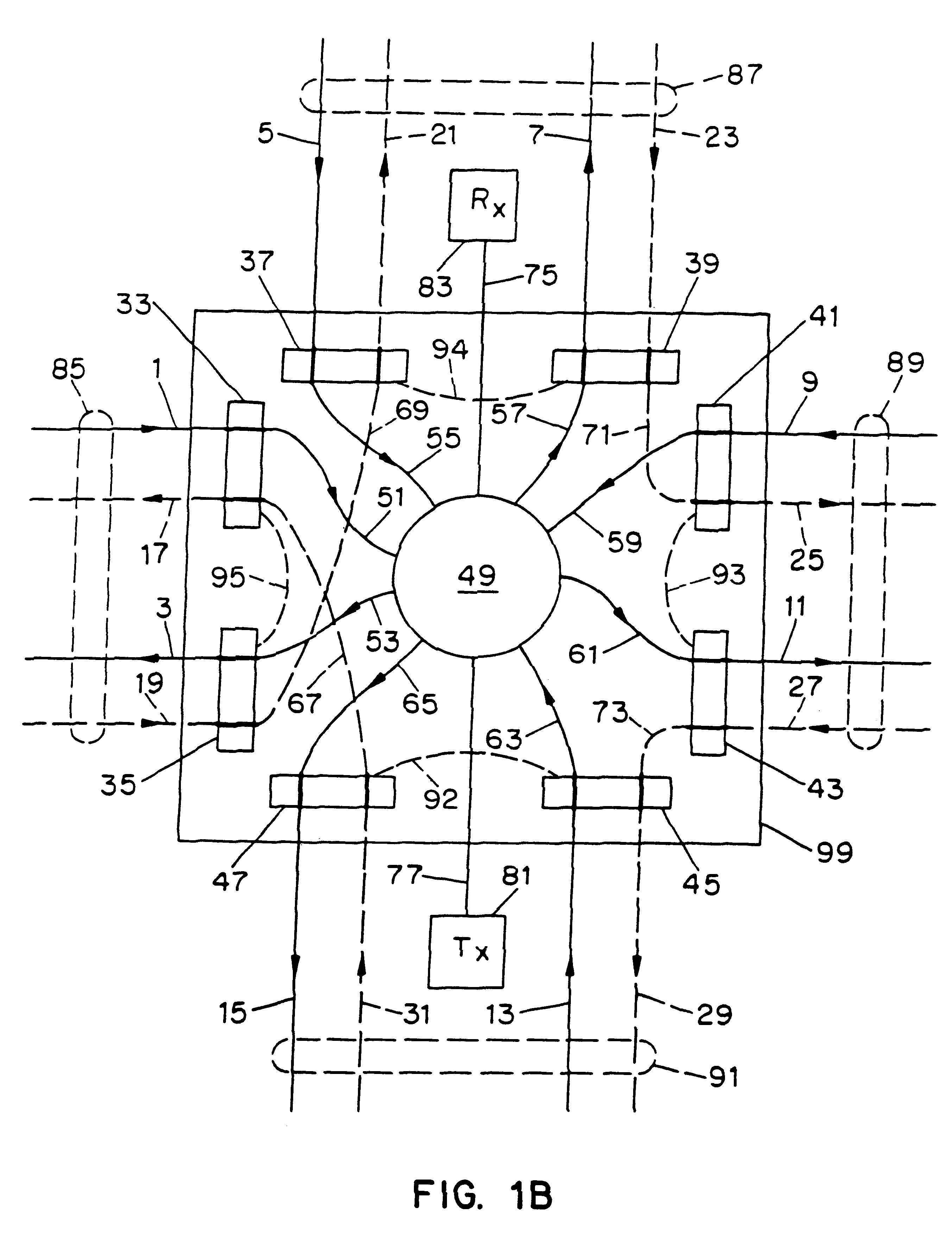Network switch failure restoration
a network switch and failure restoration technology, applied in the field of network switch failure restoration, can solve problems such as equipment failure and overload, failure to work normally, and serious consequences
- Summary
- Abstract
- Description
- Claims
- Application Information
AI Technical Summary
Benefits of technology
Problems solved by technology
Method used
Image
Examples
Embodiment Construction
Automatic protection switching ("APS") for node failures requires rapid recovery from any failure of a network node. A network node is any station containing switching equipment (including protection switches) connected to one or more links and possibly end user equipment for the purpose of creating data paths between end users over successions of links and intermediate nodes. Links may be made up of one or more data conduits for transmitting data (including information in any form). In this preferred embodiment, optical fibers will be described as the conduits, so that a link will be composed of pairs of fibers carrying traffic in opposite directions. The central switches within nodes are preferably optical switches in this embodiment.
A network contains two or more nodes which are selectively connected together by links in a particular configuration. In this preferred embodiment, each link in a network contains a number of optical fibers, each of which carries data in a single dire...
PUM
 Login to View More
Login to View More Abstract
Description
Claims
Application Information
 Login to View More
Login to View More - R&D
- Intellectual Property
- Life Sciences
- Materials
- Tech Scout
- Unparalleled Data Quality
- Higher Quality Content
- 60% Fewer Hallucinations
Browse by: Latest US Patents, China's latest patents, Technical Efficacy Thesaurus, Application Domain, Technology Topic, Popular Technical Reports.
© 2025 PatSnap. All rights reserved.Legal|Privacy policy|Modern Slavery Act Transparency Statement|Sitemap|About US| Contact US: help@patsnap.com



